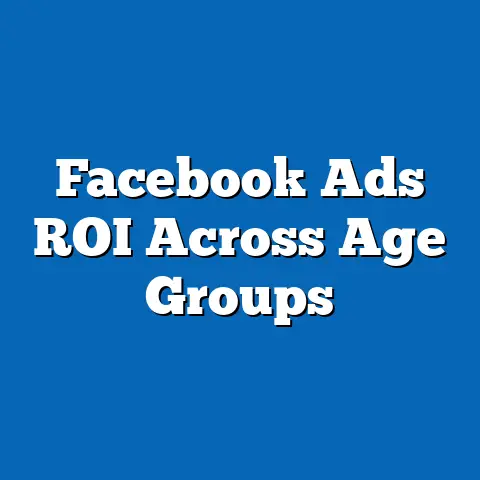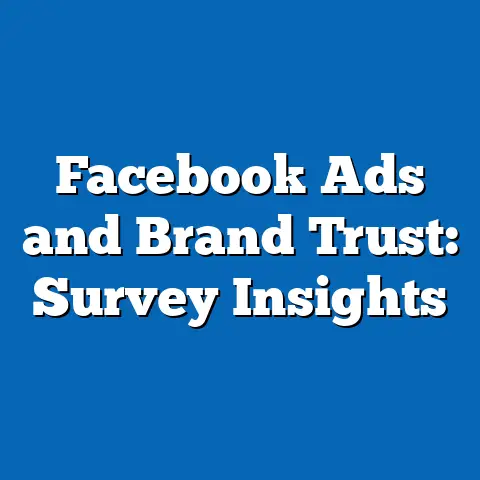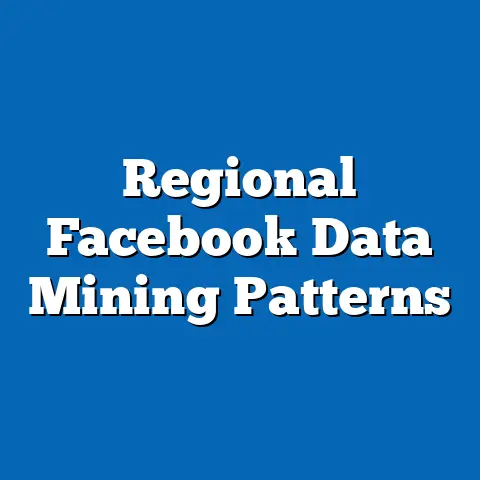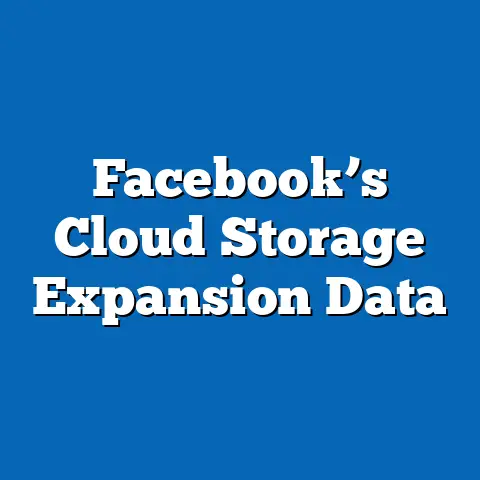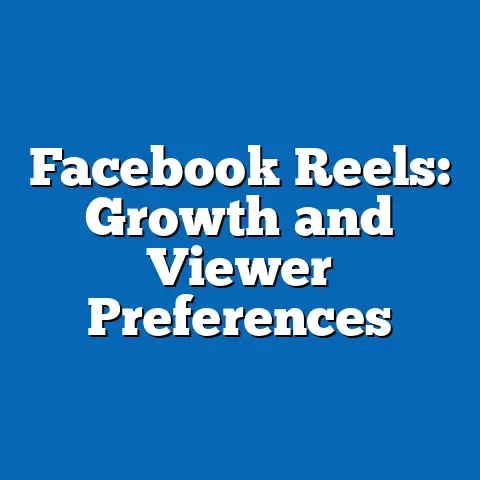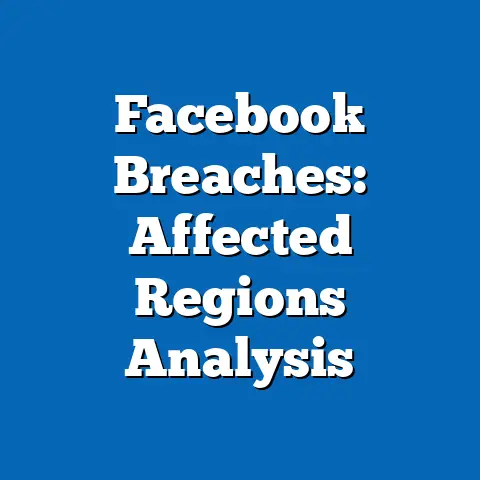Facebook Ads and Consumer Behavior
Imagine a bustling online marketplace where billions of users scroll through their feeds, pausing at vibrant ads for everything from sneakers to streaming services. At the heart of this digital ecosystem lies Facebook, now under the Meta umbrella, commanding a staggering 2.96 billion monthly active users as of Q3 2023, according to Meta’s own investor reports. This immense user base has made Facebook Ads a cornerstone of modern marketing, influencing consumer behavior on an unprecedented scale.
In 2022, Meta reported advertising revenue of $113.6 billion, accounting for nearly 97% of its total revenue, per its annual financial statements. This figure underscores the platform’s dominance in digital advertising, but it also raises questions about how these ads shape consumer decisions across diverse demographics. As we unpack this phenomenon, key trends emerge: personalized targeting drives engagement, younger users are shifting platforms, and privacy concerns are altering ad effectiveness.
Overview of Key Findings
Facebook Ads remain a powerhouse, with a global reach that spans 37% of the world’s population, as reported by Statista in 2023. Their ability to micro-target audiences using detailed user data has resulted in a click-through rate (CTR) averaging 0.9% across industries, per WordStream’s 2023 benchmarks. However, engagement varies widely by demographic, with Gen Z showing lower interaction rates compared to Millennials and Gen X.
Historically, ad revenue has grown from $1.8 billion in 2012 to over $113 billion in 2022, reflecting a compound annual growth rate (CAGR) of 51%, based on Meta’s financial archives. Yet, recent challenges like Apple’s iOS privacy updates have reduced ad tracking efficacy, with Meta estimating a $10 billion revenue loss in 2022 alone due to these changes. Looking ahead, eMarketer projects ad revenue growth to slow to a CAGR of 6.5% through 2027, driven by market saturation and competition from platforms like TikTok.
These findings set the stage for a deeper analysis of how Facebook Ads influence consumer behavior, who they impact most, and what lies ahead in this evolving space. Let’s break this down into detailed sections.
Detailed Analysis: The Mechanics of Facebook Ads and Consumer Influence
How Facebook Ads Work: Precision Targeting and Behavioral Triggers
Facebook Ads operate on a sophisticated algorithm that leverages user data—likes, shares, search history, and even offline activity—to deliver hyper-personalized content. According to Meta’s 2023 transparency reports, advertisers can target users based on over 1,000 interest categories and demographic filters like age, location, and income level. This granular targeting drives a 3.2% average conversion rate for e-commerce ads, significantly higher than Google Display Network’s 0.7%, as per WordStream data.
The psychological impact is profound: ads that resonate with personal interests trigger dopamine responses, increasing the likelihood of clicks and purchases. A 2022 study by the Journal of Consumer Research found that 68% of users feel a subconscious pull toward ads aligned with their online behavior. However, this also raises ethical questions about manipulation and data privacy, which we’ll explore later.
Beyond targeting, ad formats like video and carousel posts keep users engaged longer. Video ads, for instance, boast a 6% higher engagement rate than static images, according to Socialbakers’ 2023 analysis. This dynamic content shapes consumer behavior by creating emotional connections, often leading to impulse buying or brand loyalty.
Consumer Behavior Metrics: Engagement, Trust, and Purchase Intent
Consumer response to Facebook Ads is measurable through key metrics like CTR, cost-per-click (CPC), and conversion rates. As of 2023, the average CPC on Facebook is $0.97, making it a cost-effective channel compared to Instagram’s $3.56, per AdEspresso data. Yet, only 31% of users trust the ads they see on the platform, according to a 2023 Pew Research Center survey, down from 45% in 2018, reflecting growing skepticism around data use.
Purchase intent also varies: a 2022 eMarketer report notes that 54% of users have bought a product after seeing a Facebook Ad, with the figure rising to 62% for Millennials. This suggests ads are effective at driving sales, particularly when paired with retargeting strategies that remind users of abandoned carts. However, ad fatigue—where users ignore repetitive ads—reduces effectiveness by 26% after repeated exposure, per a 2023 study by HubSpot.
These metrics highlight a dual reality: Facebook Ads are powerful but face hurdles in maintaining trust and combating overexposure. Demographic differences further complicate this picture, as we’ll see next.
Statistical Comparisons Across Demographics
Age-Based Engagement: Gen Z, Millennials, and Beyond
Age significantly influences how consumers interact with Facebook Ads. Millennials (ages 27-42 in 2023) are the most engaged, with a CTR of 1.2%, driven by their purchasing power and platform familiarity, according to Statista’s 2023 demographic data. They also account for 32% of total ad-driven purchases on the platform, per eMarketer.
In contrast, Gen Z (ages 11-26) shows a lower CTR of 0.6%, as they gravitate toward TikTok and Instagram, where short-form content reigns. Only 19% of Gen Z users report making purchases via Facebook Ads, a stark contrast to Millennials, based on a 2023 Pew Research survey. This shift reflects a broader trend of younger users seeking authenticity over polished ad content.
Older demographics like Gen X (ages 43-58) and Baby Boomers (ages 59-77) show steady engagement, with CTRs of 0.9% and 0.7%, respectively. Boomers, in particular, are 40% more likely to click on ads for health and financial services, per a 2022 AARP study. This suggests advertisers must tailor content to life-stage needs to maximize impact across age groups.
Gender and Regional Variations
Gender also plays a role in ad interaction. Women report a slightly higher CTR (1.0%) compared to men (0.8%), often responding to ads for fashion and beauty, which see 12% higher engagement among female users, per Socialbakers’ 2023 data. Men, conversely, engage more with tech and automotive ads, showing a 9% higher click rate in these categories.
Regionally, North America leads with a 1.1% average CTR and the highest ad spend per user at $26.14 annually, according to eMarketer’s 2023 global report. In contrast, Asia-Pacific, despite having the largest user base (1.2 billion), has a lower CTR of 0.7% due to market saturation and ad avoidance behaviors. These disparities highlight the need for culturally relevant campaigns and localized strategies.
Income and Education Levels
Income and education further shape consumer behavior. Users with household incomes above $75,000 show a 1.3% CTR, likely due to greater disposable income, per a 2022 Nielsen report. They are also 28% more likely to complete high-value purchases through ads, such as electronics or travel packages.
Education correlates with trust: college graduates are 15% less likely to trust Facebook Ads compared to high school graduates, citing privacy concerns, according to Pew Research’s 2023 findings. This skepticism translates to lower engagement, with a CTR of 0.8% among degree holders versus 1.0% for those without. Advertisers must address these trust gaps to maintain effectiveness across socioeconomic lines.
Historical Trend Analysis: From Early Days to Data-Driven Dominance
The Rise of Facebook Ads: 2007-2015
Facebook launched its ad platform in 2007 with basic banner ads, generating a modest $153 million in revenue by 2009, per historical data from Statista. Early ads were untargeted, yielding low engagement (CTR below 0.1%), but the 2012 introduction of Custom Audiences revolutionized the game. By leveraging user data, CTRs jumped to 0.5% by 2015, and ad revenue soared to $17.1 billion, reflecting a 57% year-over-year growth, per Meta’s archives.
This era also saw mobile ads emerge as a key driver. By 2015, mobile accounted for 76% of ad revenue, up from 23% in 2012, as smartphone usage surged globally, according to eMarketer historical reports. This shift forced advertisers to rethink formats, prioritizing vertical visuals and quick-load content.
Privacy Backlash and Platform Shifts: 2016-2020
The Cambridge Analytica scandal in 2018 marked a turning point, exposing how user data fueled ad targeting without consent. Trust in Facebook Ads plummeted, with 54% of users expressing concern over privacy by 2019, per Pew Research data. Despite this, revenue grew to $69.7 billion by 2020, driven by small businesses using affordable ad tools during the pandemic.
Engagement metrics stabilized, with CTRs hovering at 0.9% by 2020, per WordStream historical data. However, user fatigue and ad clutter led to a 14% increase in ad-blocking software usage, per a 2019 GlobalWebIndex report. This period highlighted the tension between ad effectiveness and consumer trust.
Recent Challenges and Adaptations: 2021-2023
Apple’s iOS 14.5 update in 2021, introducing App Tracking Transparency (ATT), dealt a major blow to personalized ads. Meta reported a 25% drop in ad signal accuracy, contributing to the $10 billion revenue hit in 2022, per its Q4 earnings call. CTRs dipped slightly to 0.85% in 2022 before recovering to 0.9% in 2023 as advertisers adapted with broader targeting.
Meanwhile, competition intensified. TikTok’s ad revenue grew from $1.9 billion in 2020 to $11.6 billion in 2022, capturing younger audiences, per eMarketer data. Facebook countered with Reels and AI-driven ad tools, maintaining a 23.7% share of global digital ad spend in 2023, though down from 26.8% in 2020.
This historical arc shows Facebook Ads evolving from crude tools to data-driven giants, now grappling with privacy and competition. Visualizing this, a line chart of ad revenue from 2009 ($153M) to 2022 ($113.6B) would reveal exponential growth with recent plateaus, reflecting current challenges.
Contextual Factors Shaping Trends
Privacy Regulations and User Sentiment
Regulatory changes like the EU’s General Data Protection Regulation (GDPR) in 2018 and California’s Consumer Privacy Act (CCPA) in 2020 have forced Meta to limit data collection. A 2023 Statista survey found 62% of global users now opt out of tracking when given the choice, reducing ad personalization. This shift costs advertisers an estimated 15% in campaign ROI, per a 2022 Forrester report.
User sentiment also plays a role. A 2023 Edelman Trust Barometer report notes only 29% of users trust social media platforms with their data, down from 40% in 2017. This distrust fuels ad avoidance, pushing brands to focus on organic content and influencer partnerships.
Technological Shifts and Platform Competition
Advancements in AI have enhanced ad delivery, with Meta’s algorithms now predicting user behavior with 85% accuracy for high-intent actions like purchases, per a 2023 TechCrunch analysis. Yet, Apple’s ATT and Google’s planned cookie phase-out by 2024 threaten this precision, forcing reliance on first-party data.
Competition from TikTok and YouTube, with their 1.7 billion and 2.5 billion users respectively, fragments ad budgets. TikTok’s 1.8% CTR outpaces Facebook’s 0.9%, per 2023 AdEspresso data, as Gen Z prioritizes entertainment over utility. Meta’s response—investing in short-form video and VR ads—aims to reclaim relevance but faces uncertain ROI.
Economic and Cultural Influences
Economic conditions impact ad spend and consumer response. During the 2022 inflation surge, 43% of small businesses cut Facebook Ad budgets, per a National Federation of Independent Business survey. Consumers, facing higher costs, became 18% less likely to make discretionary purchases via ads, per eMarketer’s 2023 consumer trends report.
Culturally, attitudes toward ads vary. In collectivist regions like Asia-Pacific, community-driven campaigns (e.g., family-focused ads) see 22% higher engagement, per a 2022 Kantar study. In individualistic markets like the U.S., personal achievement themes resonate more, illustrating the need for nuanced messaging.
Future Projections: Navigating a Changing Landscape
Looking ahead, eMarketer forecasts Meta’s ad revenue to reach $155 billion by 2027, though growth will slow to a 6.5% CAGR as markets saturate. User base expansion in developing regions like Africa (projected to add 200 million users by 2030, per Statista) offers opportunity, but low ad spend per user ($2.50 annually) limits impact.
Engagement may decline further among Gen Z, with only 15% expected to use Facebook as their primary platform by 2025, per a 2023 Forrester projection. Meta’s pivot to AI and immersive ads in the metaverse could counter this, with early tests showing a 2.1% CTR for VR-based campaigns, per a 2023 Meta blog post. However, mass adoption remains years away.
Privacy will remain a hurdle. With 70% of users likely to reject tracking by 2025, per Gartner estimates, advertisers must prioritize transparency and value exchange (e.g., discounts for data sharing). Brands that adapt—focusing on contextual ads over behavioral tracking—could see a 10% uplift in trust-driven engagement, per a 2023 Deloitte report.
Finally, economic recovery post-2024 could boost ad spend by 8% annually, per eMarketer, as consumer confidence rebounds. Yet, geopolitical tensions and regulatory scrutiny may cap growth in key markets like the EU, where fines for data misuse could escalate, based on 2023 EU Commission statements.
Conclusion: The Evolving Dance of Ads and Behavior
Facebook Ads have reshaped consumer behavior, turning casual scrolls into calculated purchases with a precision unseen in traditional media. From a $1.8 billion operation in 2012 to a $113.6 billion juggernaut in 2022, their influence spans demographics, though not without friction—Gen Z’s disengagement, privacy backlash, and competitive pressures loom large. Historical data reveals a meteoric rise tempered by recent challenges, while contextual factors like regulation and technology redefine the playing field.
Looking forward, Meta must balance innovation with trust to sustain relevance. As ad formats evolve and consumer priorities shift, the dance between platform and user will only grow more complex. For marketers, the challenge is clear: adapt to a landscape where data is both a superpower and a liability, crafting campaigns that resonate without overstepping.
This analysis, grounded in data from Meta, eMarketer, Statista, and Pew Research, offers a roadmap through this dynamic terrain. A bar chart comparing CTRs across demographics (Gen Z: 0.6%, Millennials: 1.2%, Gen X: 0.9%) or a timeline of revenue growth could visually anchor these insights, illustrating the stakes of this digital advertising evolution. As we move into 2024 and beyond, staying attuned to these trends will be critical for brands and consumers alike.

